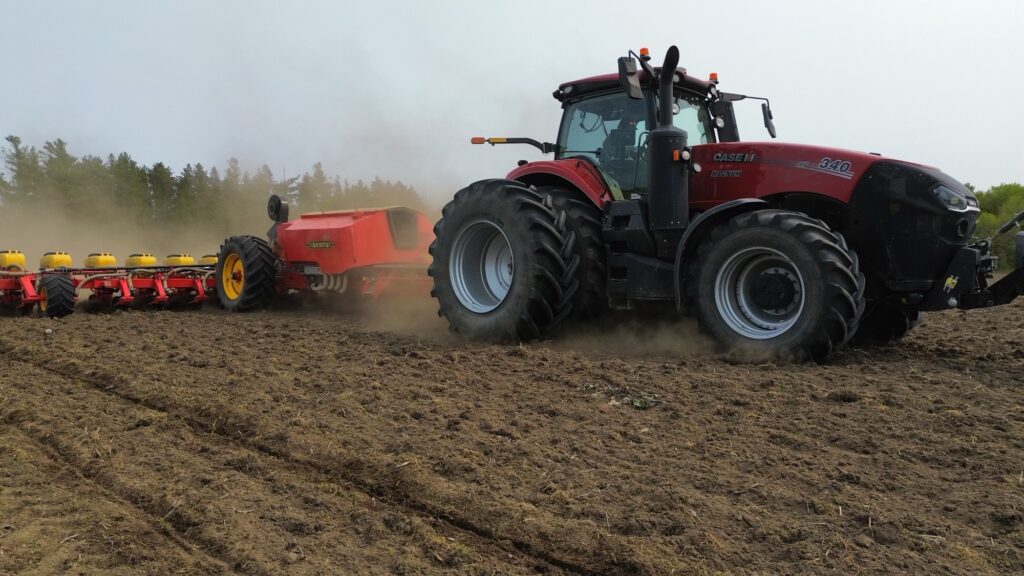April showers, bring May flowers…

And April showers provide a great start for Ontario grains
March 20, 2024, marked the first day of spring, which means warmer weather is on the horizon! But it is no secret that spring weather is often inconsistent and unpredictable, making things tricky for Ontario grain farmers.
Spring marks the first of two particularly busy seasons (planting and harvest) for Ontario grain farmers. Spring planting on the farm requires hard work, equipment in working order, and good weather to ensure success. Success at planting means the seeds are in the ground and ready to grow into healthy grains! But what happens to newly planted grains when the weather conditions are not ideal?
Ideal conditions
First, let’s dive into what Ontario grain farmers want to experience when it comes to spring weather. For farmers to begin planting corn and soybean seeds into the soil, the ground must warm up after winter. These two grains require warm – around 10 °C – soil temperatures to begin emerging, or growing out of the ground. Barley, wheat, and oats tend to grow well in cooler soil temperatures. It is also important for the soil to be at an ideal moisture level. Seeds need to be planted in moist soils, so when combined with warm soils, the seeds can start developing and growing into seedlings. Fortunately, in Ontario, we have temperate weather conditions during spring planting; this allows seeds to be planted into ideal soil and to grow into healthy grains.
Going back to our title, “April showers, bring May flowers,” Ontario grains need water, just like flowers. After all the seeds are planted, it is important that fields receive some rain. Rain is important for growth and nutrient uptake in the seed. But what happens if there is too much water? Too little? What if it’s too hot or too cold? Let’s find out!
Heavy rain
In many cases, extreme amounts of rain can be just as, if not more, impactful during planting and early growth of grains. The first issue that arises because of too much rain is a muddy field, which makes tractors challenging to operate. Due to the weight of farm equipment, driving on overly saturated soils can cause compaction issues, leading to poor seed growth or even a stuck tractor! Another major issue grain farmers may face because of rainfall during planting is washed-away seeds. If the rain falls faster than the soil can absorb it or more than it can hold, soil and seeds can wash away. Farmers may need to re-plant their grains in certain areas of a field following an issue like this, causing more stress on an already busy season!
Drought
Drought conditions are when there have been consecutive days with little to no rainfall, and just like you and I, grains need water to grow! If a seed receives very little rain after planting, its natural response will be to hang onto any water it has already adsorbed and stop growing. This will result in the plant having difficulty emerging and growing into a seedling. Water is also responsible for moving nutrients into the seed and plant. Without significant water, the seedlings will receive fewer nutrients, ultimately causing issues in growth.
Air temperature
Just like the amount of rainfall we receive in the spring in Ontario is variable, the temperature outside is also not always consistent. Cold weather can cause the seeds to become dormant, which means they are temporarily unable to use all their nutrients and grow. Cold weather can also lead to a late frost, especially overnight, when temperatures drop. Frost can increase the risk of stunting the growth of the grains.
Impacts on the grains due to heat are often associated with dry conditions but can be harmful on their own. If plants are in too hot of conditions for extended periods, they are more susceptible to stress, which can appear in symptoms such as slowed growth or withering at the seedling stage.



